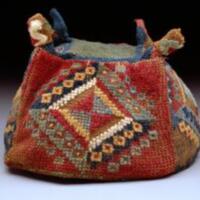Inca Art
Inca art was beautiful and useful in the peoples' everyday lives. Their art represents the Inca history and culture. The Chimú Vessel Flute, for example, was created originally by the Chimú peoples. However, the Inca conquered them in 1470 and took many of their practices such as making and using these vessel flutes. Much of Chimú culture integrated itself into Inca culture, which is why we see this parallel and recreation of artwork in the Inca culture. This is a large representation of Inca history and how cultures were integrated together to build the Inca society. Other ceramics included those used in preparation and serving food, storage, political and ceremonial activities, and to honor the privileged. While ceramics were used in some parts of Inca culture for special purposes and in everyday life, there were not many Inca peoples who would make the ceramics. Fewer people made ceramics compared to other the large amount of people who created artwork like textiles. This was because ceramics were more easily and readily made while items like textiles took long periods of time. There were also differences in the value of ceramics versus other forms of art like textiles, because textiles were used more often than ceramics and for more sacred reasons, like to honor status.
Textiles in Inca culture had social and ceremonial significance. The Four Cornered Hat that is pictured has beautiful colors. The colors represented the status of those who wore them. They also had elements of military association through the colors to show status in the military. Other textile items included blankets, clothing (including footwear), and bags. These were used in everyday life and in sacred rituals. For example, they used them in child naming and puberty ceremonies for children. In Inca marriages, the groom and his family would give the bride's family a cloth that represented their union. The dead are also given specially designed clothes or other useful textiles (bags, baskets, etc.) to take with them to the afterlife, and to show the significance of ancestors. Overall, Inca artwork, while beautiful, had a significant importance in Inca society through everyday use and symbolism.


